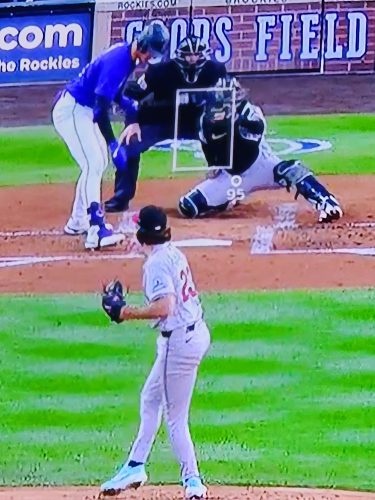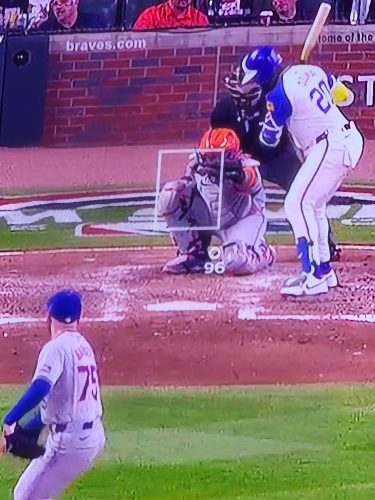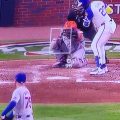
Baseball traditionalists often tout the “human element” of the game as one of its endearing qualities. However, this element can also be one of its most frustrating, especially when it comes to an umpire’s judgment of the strike zone. For years, fans, players, and analysts have debated the accuracy of home plate umpires, particularly those with seemingly inconsistent or overly wide (or narrow) strike zones. With high-definition cameras and sophisticated tracking technology, it’s become increasingly clear: umpires often miss calls. But is going full-robot the answer, and if not, why doesn’t MLB change how strikes and balls are determined?
Technological Accuracy vs. The Human Factor
Anyone who watches televised baseball has witnessed the moment: a pitch appears to be clearly in or out of the strike zone, but the umpire calls the opposite way. Superimposed over the screen is technology’s interpretation, a neatly drawn box representing the official zone, often contradicting the ump’s call.
Studies reveal significant discrepancies between human umpires and technology-driven strike zones. Some umpires have been found to be off by several inches, and accuracy is inconsistent across the league. Meanwhile, computerized strike zone systems, such as the renowned Hawk-Eye tracking technology, boast an extraordinarily high accuracy rate.
This raises important questions: Does umpire error significantly affect games’ outcomes? Would removing that error fundamentally change baseball’s nature?
The Impact of Bad Calls
One missed strike call might not seem like a big deal, but its impact can be profound. A blown “strike three” call extends an inning, adding pressure to the pitcher and potentially altering the game’s trajectory. Conversely, an incorrect ball call can give a batter a significant advantage and even lead to a walk that wouldn’t have occurred with a correctly called strike. Over an entire game or season, such discrepancies can add up and become potential deciding factors.
Despite their imperfections, human umpires provide something that technology cannot: judgment. The official strike zone is defined by the batter’s stance, not a rigid box in space. Umpires use discretion to adjust the zone based on the batter’s height and posture. No current technology can fully replicate that nuanced decision-making. Furthermore, umpires often consider the flow of the game, a batter’s history with a pitcher, and other less definable factors.
Why the Resistance to Change?
There are several reasons MLB has been hesitant to embrace a fully automated “robot ump” system:
- Tradition: Baseball is a sport steeped in history. Significant changes to how the game is played often face stiff resistance.
- The Umpires’ Union: Removing the strike-calling responsibility from umpires would potentially impact jobs or restructure the role completely. The union naturally resists such changes.
- The Pace of the Game: An automated system would likely need some calibration time and could introduce technical delays, potentially disrupting the flow.
- The Cost: Implementing the technology across all Major League ballparks would be a significant financial investment.
Potential Middle Ground
Baseball purists may cringe, but MLB doesn’t need to go full robot. A compromise exists. The Automated Ball-Strike (ABS) system is being tested in minor league systems. This allows the home plate umpire to maintain authority, but teams get a limited number of challenges per game. If the technology overturns the original call, the challenge remains. If not, they lose their option to challenge. This allows for the correction of egregious errors while still maintaining the human element.
The Future of the Strike Zone
Baseball cannot ignore technology forever. As cameras and systems improve, the pressure to create a more accurate strike zone will mount. Whether through a full-fledged robot umpire or a hybrid challenge system, change is likely in baseball’s future. The challenge will be to implement technology in a way that enhances the game while respecting its long-held traditions.
The above article is assisted by Google Gemini, the below article assisted by ChatGPT.

The Debate Over Umpires vs. Technology in MLB
Major League Baseball (MLB) has long cherished its traditions, but as technology advances, the debate over the role of umpires in calling strikes and balls has intensified. Fans, players, and analysts often question the accuracy of umpire decisions, especially when television replays and pitch-tracking technology frequently show discrepancies between the called strikes and balls and what the technology suggests.
The Current State of Umpiring
MLB umpires are highly trained professionals who are tasked with making split-second decisions on pitches that can travel over 95 mph. Despite their expertise, the human element inevitably leads to a margin of error. This is where technology, specifically the pitch-tracking system, comes into play. Systems like Statcast and TrackMan use radar and cameras to track the exact location of pitches, providing a precise measurement that can be compared to the umpire’s call.
The Impact of Technology
The use of technology in broadcasting has given fans a new perspective on the game, with the “strike zone box” becoming a standard feature in televised baseball games. This visual aid illustrates the strike zone and the location of each pitch, allowing viewers to see when a pitch is incorrectly called. Studies have shown that umpires’ accuracy has improved over the years, but even a small percentage of missed calls can have a significant impact on the outcome of a game.
The Argument for Change
Proponents of using technology to call balls and strikes argue that it would increase the accuracy and consistency of these crucial calls. They point to the success of the Automated Ball-Strike System (ABS), which has been tested in the minor leagues and in the independent Atlantic League. The ABS, also known as “robot umpires,” uses radar and camera systems to determine the strike zone and make ball-strike calls, which are then relayed to the home plate umpire through an earpiece.
Resistance to Change
Despite the potential benefits, there is considerable resistance to fully implementing technology for calling balls and strikes in MLB. Traditionalists argue that the human element of umpiring is an integral part of baseball’s charm and that technology cannot replicate the nuanced judgment calls that experienced umpires make. There are also concerns about the technology’s limitations, such as its ability to adapt to different batter stances and strike zone interpretations.
The Future of Umpiring
MLB has been cautious in its approach to integrating technology into officiating, opting for a gradual implementation. The league continues to experiment with ABS in the minor leagues, gathering data and feedback to refine the system. The goal is to strike a balance between preserving the traditional aspects of the game and embracing technological advancements that can enhance accuracy and fairness.
In conclusion, the debate over umpires versus technology in calling strikes and balls is a complex issue that touches on tradition, accuracy, and the evolving nature of baseball. While technology offers the promise of greater precision, the challenge lies in integrating it in a way that respects the game’s heritage and the human element that has defined baseball for over a century.







